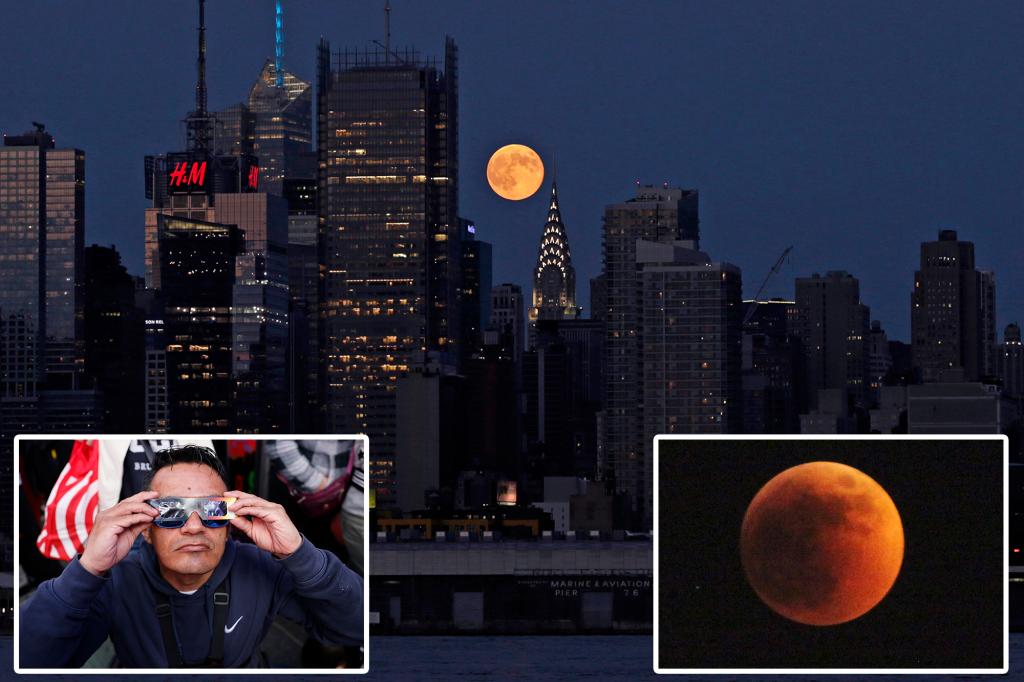It’s a cosmic trifecta.
Stargazers will be treated to a heavenly triple-header on Tuesday. This month’s harvest moon will be coinciding with a supermoon, a blood moon and a partial lunar eclipse.
While the harvest moon occurs annually close to the autumnal equinox in September, and supermoons transpire three to four times a year, witnessing all three phenomena on the same night is “quite rare,” Teresa Monsue, an astrophysicist at NASA’s Goddard Space Flight Center, told NPR.
All about the lunar eclipse, supermoon and blood moon
The supermoon occurs when a “full moon coincides with the Moon’s closest approach to Earth in its elliptical orbit, a point known as perigee,” according to NASA. Tomorrow night’s event will be extra special as the moon will be partially shadowed due to the lunar eclipse, which occurs when Earth passes between the Sun and the Moon, Fox Weather reported.
According to NASA, the eclipse will peak just over two hours later at 10:44 p.m. EDT, whereupon just eight percent of the moon will be shrouded in shadow.
“Aside from the small darkened portion at the top of the moon’s disk, most of the visible lunar disk will be in Earth’s penumbra, the lighter portion of the planet’s shadow that does not entirely block the sun’s light,” explained Monsue.
This cosmic overlap will lend the lunar entity a spooky rust-like hue known as a “blood moon.”
Alas, the partial overlap will far cry from the total solar eclipse this past Spring when the moon completely blotted out the sun, leaving a giant swath of the US in total darkness.
How and where should I watch it?
One plus side is that, unlike with a solar eclipse, lunar lovers can gaze at the space rock sans protective eyewear as the light is no brighter than regular moonlight, Monsue explained.
She urged stargazers to use a telescope or binoculars so they could view the contrast between craters and other features on the surface of the moon.
This celestial triple-header will be visible from both North and South America (Europe and Africa will be able to see the eclipse), but viewing will be hindered by cloud cover over most of the US, particularly the East Coast, Plains region and Pacific Northwest.
When will this happen again?
Those who miss Tuesday night’s eclipse and supermoon double-billing won’t be able to see another one until October 8, 2033, according to Monsue.
Fortunately, stargazers will be able to witness the return of the supermoon on Oct. 17 as well as a total lunar eclipse — when the moon passes completely into Earth’s shadow — on March 14, 2025.
